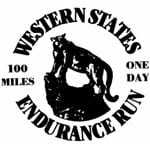 It’s time for what has, perhaps, become my favorite iRunFar article of the year, our Western States 100 group think predictions. Yes, it’s geeky, but it’s also informative as heck. For the sixth-straight year, we’ve tabulated and taken a look at all the votes cast in our Western States prediction contest. In the past, these ‘group think’ predictions have generally been (much) better at forecasting the race’s outcome than individual pickers. So, if you’re looking for a solid relative ranking of this year’s Western States 100 competitors, look no further.
It’s time for what has, perhaps, become my favorite iRunFar article of the year, our Western States 100 group think predictions. Yes, it’s geeky, but it’s also informative as heck. For the sixth-straight year, we’ve tabulated and taken a look at all the votes cast in our Western States prediction contest. In the past, these ‘group think’ predictions have generally been (much) better at forecasting the race’s outcome than individual pickers. So, if you’re looking for a solid relative ranking of this year’s Western States 100 competitors, look no further.
How the Group Think Predictions Work
Back to the predictions. Below, we attempt to apply a hive-mentality approach to see how the men’s and women’s fields play out when the collective thoughts of over 1,000(!?) participants are accumulated. In addition to showing how many picks the top runners received for each place, we ranked the runners by MVP-style voting (i.e., 8 points for first, 7 points for second, and so on). Both the men’s and women’s tables show all WS runners who accumulated 50 or more points. Read on to see how the masses predicted the outcome for the Big Dance this weekend as well as some iRunFar analysis of those predictions and commentary on the race.
The Just Rewards
 Thanks again to all who participated in the contest! After this weekend, six lucky winners will be crowned… and receive prize packs courtesy of Inov-8 and Julbo. Remember to follow us on Twitter to receive updates on the leaders throughout the day to see how your picks are performing.
Thanks again to all who participated in the contest! After this weekend, six lucky winners will be crowned… and receive prize packs courtesy of Inov-8 and Julbo. Remember to follow us on Twitter to receive updates on the leaders throughout the day to see how your picks are performing.
2014 Western States 100 Men’s Field

Interesting Men’s Field Notes
- Last year, defending champ Timothy Olson received a vote on 792 0f 823 (96%) of ballots. This year, last year’s runner up (but top returning runner) Rob Krar received a vote on 1011 of 1031 ballots (98%!). That mean’s he was missing from 11 fewer ballots than Timmy when more than 200 additional ballots were cast this year. Incredible! People sure think Rob is a solid bet.
- Krar also outpaced the next most popular choice for the win by an almost a 4-1 margin. The only time there’s been a great consensus men’s pick in our contest was the first year, 2009, when Scott Jurek had 101 first-place votes to Hal Koerner’s 15. The same year, Jurek had 37% more points than the next leading point-getter, Koerner, while Krar has 32% more points than his closest rival, Ryan Sandes, this year.
- Rob Krar had more votes to finish first or second (913) than another person did to finish in the top eight. (Sandes had 911 total votes.)
- Krar is clearly the crowd favorite, but Sandes is the clear pick to finish behind him. He had the second-highest point total as well as the most votes to finish both second and third.
- The biggest surprise at the top of the standings is Dylan Bowman, ranking out as third man. DBo, there’s a confidence boost for you.
- Third place felt like the most wide open position up front with five men–Sandes, Heras, Bowman, Sharman, and Clark–each receiving between 108 and 185 votes.
- While not far behind Bowman, three men–Ian Sharman, Miguel Heras, and Nick Clark–were all within a few total points in fourth to sixth, but they got there via quite different routes. Of the three, Miguel was easily the most popular pick to make the podium, but was left off far more ballots than the other two. Okay, Sharman and Clark had similar routes, but what would you expect after their battle last summer… with Sharman coming out on top then and now. Sharman was the most popular pick to finish fifth, but by only five more votes than Clark (169 to 164), while Clark was the top pick to finish fourth, sixth, AND seventh! No one else came particularly close in any of those placings, either. There is a big drop off in point totals after these three.
- Overall, folks went with proven commodities over new talents. Aside from Krar (one 100 miler) and Max King (one start with planned DNF due to injury at a 100 miler), the rest of the top eight were of the proven-veteran category. Last year, the voters predicted two unknown quantities–Mike Morton and Rob Krar–to finish third and fourth, respectively. (Not bad picking!)
- Karl Meltzer might only be ranked 12th, but he was the top vote getter to finish eighth.
- The top ranked totally unknown quantity was Alex Varner sitting at 13th.
- I’m impressed that entrants were so thorough with their research. Mike Morton isn’t running this year, but finished third last year. Having done their homework, only 30 of 1031 ballots included Morton. (Thomas Lorblanchet is a DNS and received many more votes than Morton, but he was not a confirmed DNS until after the contest closed.)
- For the first time, Ashland, Oregon does not have a representative in the top four. David Laney is the top-ranked Ashland runner at 15th. Two people picked Laney to bring a fifth men’s cougar home to Ashland.
- Just off the table are two very different darkhorses. Seth Swanson (27th/41 pts) of Missoula, Montana and Brett Rivers of Marin, California (28th/30 pts).
- Talk about times a changing, only two-American-born runners are ranked in the top 10, Bowman at third and King at sixth. Four of the second 10 were also born outside the US. For perspective, last year the top foreign-residing male vote getter (who was actually running the race) was Argentina’s Gustavo Reyes in 23rd with 37 points.
- In separate masters voting, Nick Clark had a massive 611-208 lead over Karl Meltzer. Andy Jones-Wilkins (36) had a slight edge over Scott Wolfe (29) for third place… quite a ways back. Gary Gellin and Yoshikazu Hara were the only other masters runners (who are running) that received more than 10 votes.
- We had a new record number of men receiving at least one vote at 116. The previous high was 107 set last year. The number of men receiving 10 or more points has gone from 28 to 31 to 38 over the past three years. Over the same time, the number of ballots has more than doubled… but without a corresponding dilution of top vote getters.
Throw Back the Clock – 2009
- In 2009, Max King was seeded 23rd between Sean Meissner and Dean Karnazes.
- In 2009, Erik Skaden was ranked fourth coming into the race. Going for his 10th finish five years later, Skaden received one eighth place vote this year.
- In 2009, not a single international runner was picked to finish in the top 10. Tsuyoshi Kaburaki and Jez Bragg would go on to finish second and third.
2014 Western States 100 Women’s Field

Interesting Women’s Field Notes
- It should come as no surprise that last year’s women’s champion, Pam Smith, is the top pick for this year’s race. She easily received the most points and was the most frequent pick to place both first and second. She was also found on the most ballots, but only a few more than Nikki Kimball.
- Emily Harrison and Nikki Kimball had very similar point totals, but with Harrison receiving nearly twice as many first-place votes as Kimball and with being named on more ballots. This is despite Kimball’s three wins at States. Harrison was not the top vote getter to finish in any specific place, while Kimball was the most frequent pick to finish both third and fourth.
- In fourth and fifth, Stephanie Howe and Kaci Lickteig received nearly identical point totals. Stephanie was weighted a bit more toward winning, while Kaci was on more ballots.
- Meghan Arbogast sat alone in sixth. She was the top vote getter for both fifth and sixth position. She also edged Kimball out (445 to 411) in separate voting for the masters win.
- Many more votes were cast for women not racing than for men known to not be racing. Still, none were picked to finish in the top 10.
- Only one international woman, Nathalie Mauclair in ninth, was chosen in the top-10 places (and beyond). She likely suffered in voting as she was listed with her names in reverse order. She was the third most frequent pick to win in separate masters voting, although with an order of magnitude fewer votes than the top two ladies.
- The under-the-radar award goes to Alissa St. Laurent of Canada who received only five votes and nine points despite winning the Canadian Death Race and a number of other ultras last year.
- Could Stephanie Hoff be this year’s Rick Gates? That is, could people have been trying to vote for Stephanie Howe, instead?
- There are 83 women entered in this year’s Western States… 78 of them received at least one vote in this contest! That’s 94% of the field, up from 84.5% (71 of 84) last year.
- Over the past three years, the number of women receiving at least 10 points has ballooned from 27 to 43 to 62. This is in stark contrast to the men’s field, for which the same group has only increased from 28 to 38 over the same period.
Throw Back the Clock – 2009
- Only two women from the top 16 ranked women from 2009 are racing this year, Nikki Kimball and Meghan Arbogast. Nikki was the clear favorite in 2009, receiving the most points and most first-place votes. Meghan was ranked seventh with the most seventh-place votes. Five years later, Nikki has moved down one spot and Meghan has moved up on spot… that’s some consistency!
Call for Comments
- So what do you think about the group think prediction?
- What interesting observations have you made about the data?
- How would you change your picks based on what you know now?
- Want to make any of your predictions public? If so, leave a comment!
- Any statisticians want to dive into this?
